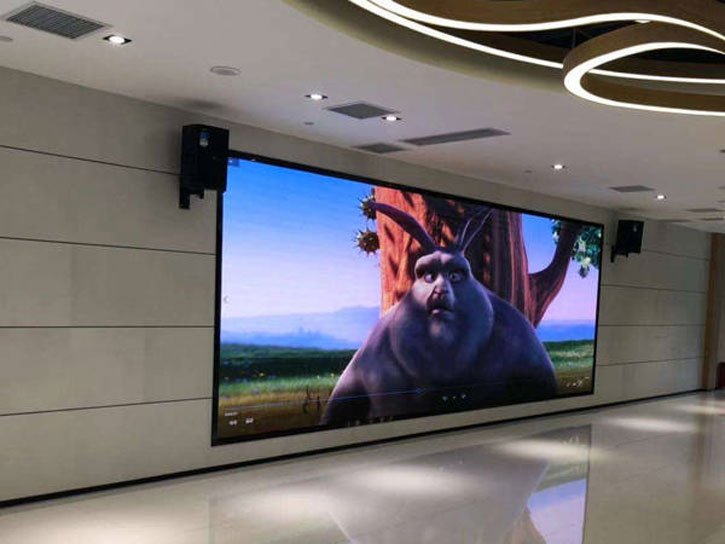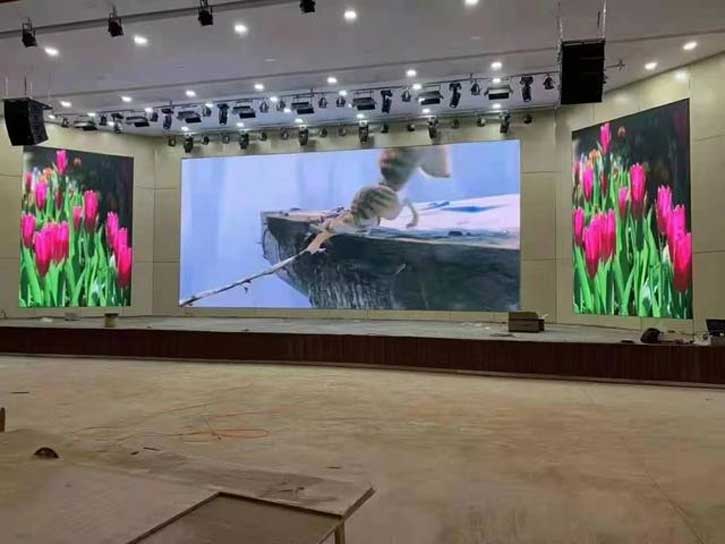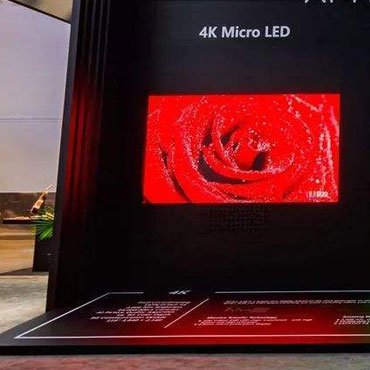Speaking of LED display, many people are not unfamiliar. Nowadays, LED displays are not uncommon in subway stations, shopping malls, buildings, conference rooms and other places. So, when buying an LED screen, the higher the brightness, the better the quality?

As we all know, LED, as a new type of light-emitting technology, is based on light-emitting diodes, and has the characteristics of low energy consumption and high brightness. Therefore, LED displays are becoming more and more popular. Not only that, when many businesses introduce LED screen products to users, they often use “low energy consumption and high brightness” as the killer, creating a perception for users that “the higher the brightness, the better, and the more value”. Is that so? In order to achieve a good energy-saving goal, in fact, our excessive pursuit of high brightness is contrary to the energy-saving goal. So what is the potential relationship between “high brightness” and “high energy saving”?
Generally, the brightness range of indoor LED displays is recommended to be around 800-1200cd/㎡, and it is recommended not to exceed this range. The brightness range of outdoor LED displays is around 5000-6000cd/m2, which should not be too bright. The brightness of the LED display is not as high as possible. There should be a limit.
For example, the maximum brightness of the outdoor LED display used is 6000cd/m2, but you have to adjust the brightness to 7000cd/m2, which is nothing more than increasing the LED. Lamp drive current.
However, the physical characteristics of LED lamps will be inevitably damaged: high-brightness LED lamps must be accompanied by high attenuation and low stability characteristics. High attenuation is not only not conducive to the long-term use requirements of the LED display, but also becomes a congenital defect of excessive pursuit of high brightness, and this congenital defect will damage the life and picture effect of the LED display all the time and by a multiplier effect.
It will double the speed of its brightness attenuation, resulting in several times faster attenuation in the later stage, making it a display with high attenuation. Moreover, it exists in a vicious circle of brightness attenuation, which cannot meet the requirements of long-term use at all.
Not only that, today, the light pollution problem in cities around the world has become very serious, and many countries have even issued laws and regulations to strictly control the brightness of outdoor lighting and display screens. As one of the higher brightness of many display technologies, LED display has almost become the overlord of outdoor display, but once it reaches night, the too bright screen will become an invisible “pollution”. Therefore, the pursuit of a balance between brightness and environmental protection seems more meaningful.
As we all know, LED, as a new type of light-emitting technology, is based on light-emitting diodes, and has the characteristics of low energy consumption and high brightness. Therefore, LED displays are becoming more and more popular. Not only that, when many businesses introduce LED screen products to users, they often use “low energy consumption and high brightness” as the killer, creating a perception for users that “the higher the brightness, the better, and the more value”. Is that so? In order to achieve a good energy-saving goal, in fact, our excessive pursuit of high brightness is contrary to the energy-saving goal. So what is the potential relationship between “high brightness” and “high energy saving”?
Generally, the brightness range of indoor LED displays is recommended to be around 800-1200cd/㎡, and it is recommended not to exceed this range. The brightness range of outdoor LED displays is around 5000-6000cd/m2, which should not be too bright. The brightness of the LED display is not as high as possible.
There should be a limit. For example, the maximum brightness of the outdoor LED display used is 6000cd/m2, but you have to adjust the brightness to 7000cd/m2, which is nothing more than increasing the LED. Lamp drive current. However, the physical characteristics of LED lamps will be inevitably damaged: high-brightness LED lamps must be accompanied by high attenuation and low stability characteristics.
High attenuation is not only not conducive to the long-term use requirements of the LED display, but also becomes a congenital defect of excessive pursuit of high brightness, and this congenital defect will damage the life and picture effect of the LED display all the time and by a multiplier effect.
It will double the speed of its brightness attenuation, resulting in several times faster attenuation in the later stage, making it a display with high attenuation. Moreover, it exists in a vicious circle of brightness attenuation, which cannot meet the requirements of long-term use at all.
Not only that, today, the light pollution problem in cities around the world has become very serious, and many countries have even issued laws and regulations to strictly control the brightness of outdoor lighting and display screens. As one of the higher brightness of many display technologies, LED display has almost become the overlord of outdoor display, but once it reaches night, the too bright screen will become an invisible “pollution”. Therefore, the pursuit of a balance between brightness and environmental protection seems more meaningful.

The last factor to consider is cost. Simply pursuing higher brightness will inevitably lead to an increase in the overall cost of the project. At the same time, it also means that users are likely to pay for the performance that exceeds their usage requirements, resulting in waste. Therefore, when purchasing an LED display, there is no need to listen to the misunderstanding of the merchants that the higher the brightness, the better the screen. The most important thing is to understand that it is meaningless to blindly pursue the brightness, and it will even cause the loss of image quality, life and cost.




